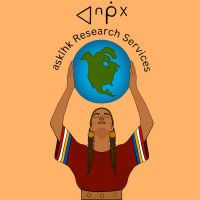Beyond the Reports: Building a Future of Awareness and Change: Part 3
- S4 Blogger

- Sep 17, 2024
- 3 min read
The U.S. Department of the Interior's second and final report on federal Indian boarding schools adds a crucial chapter to America’s reckoning with its past. Authored by Assistant Secretary of Indian Affairs Bryan Newland, this 105-page report concludes a three-year investigation into the traumatic legacy of these schools. Building on 2022’s findings, it details the enduring effects of the assimilation policies that aimed to erase Indigenous cultures, languages, and identities from the late 19th to late 20th centuries. Over 400 federal Indian boarding schools across 37 states perpetuated cultural genocide under the disguise of education.
At S4 Mobile Laboratories, we have been exploring the implications of the DOI’s findings in this three-part series, researching the historical context, cultural impact, and enduring legacy of these institutions. Our Subterra© Grey technology has been used to aid in the search for hidden truths, including identifying unmarked graves in Canada—efforts that contribute to the acknowledgment of these historical injustices.
Shaping Public Perception
Public perception of Indian boarding schools is slowly shifting as more people become aware of the atrocities. Books, films, and media have been instrumental in bringing these dark chapters to light, with narratives that focus on the lived experiences of Native American, Alaska Native, and Native Hawaiian children who were torn from their families and forced into institutions designed to erase their identities. Films like Indian Horse and documentaries such as Dawnland have played a crucial role in making these stories accessible to wider audiences, sparking conversations that challenge the dominant narratives of American history.
Educational institutions are increasingly acknowledging their role in raising awareness about Indian boarding schools. Some universities are integrating this history into their curricula, fostering reflection and action among future generations. Additionally, many universities and organizations are initiating reparative efforts, such as providing scholarships and supporting truth-telling commissions focused on survivors and their descendants.
Policy and Legislative Actions
While education and media help shape public awareness, policy and legislation are essential for achieving meaningful change. The DOI’s reports provide a critical foundation for the legislative efforts currently underway to address the legacy of Indian boarding schools. The Indian Boarding School Healing Act, introduced in 2021, seeks to establish a truth and healing commission that would formally investigate the federal government’s role in these institutions. The Act represents a significant step toward institutional accountability, but it must be accompanied by concrete reparations, including financial compensation, land restoration, and expanded access to cultural preservation programs.
Internationally, other countries with similar histories offer models for how the U.S. might approach reconciliation. Canada’s Truth and Reconciliation Commission (TRC), for example, laid out 94 Calls to Action aimed at addressing the impacts of its own Indian residential schools. While progress has been uneven, the TRC’s work has sparked legislative reform, fostered public dialogue, and helped restore some degree of justice for survivors.
The Path Ahead
As the DOI continues to identify burial sites, repatriate remains, and support survivors and their families, sustained efforts are needed to repair the damage done by these institutions. Healing requires more than just the uncovering of past atrocities; it demands a commitment to ongoing dialogue between Native communities and government entities. Such dialogue must be rooted in mutual respect and the recognition of Indigenous sovereignty.
At S4 Mobile Laboratories, our Subterra© Grey technology plays an important role in reconciliation by using advanced soil spectroscopy to identify unmarked graves and reveal hidden truths. While our innovation aids in uncovering injustices, true healing requires a collaborative approach that prioritizes Indigenous voices in advocacy and support. Healing requires collective action and education. Explore our work with Indian Boarding Schools through our related blogs and contact us to learn how we’re advancing justice and understanding for Indigenous communities.





Comments